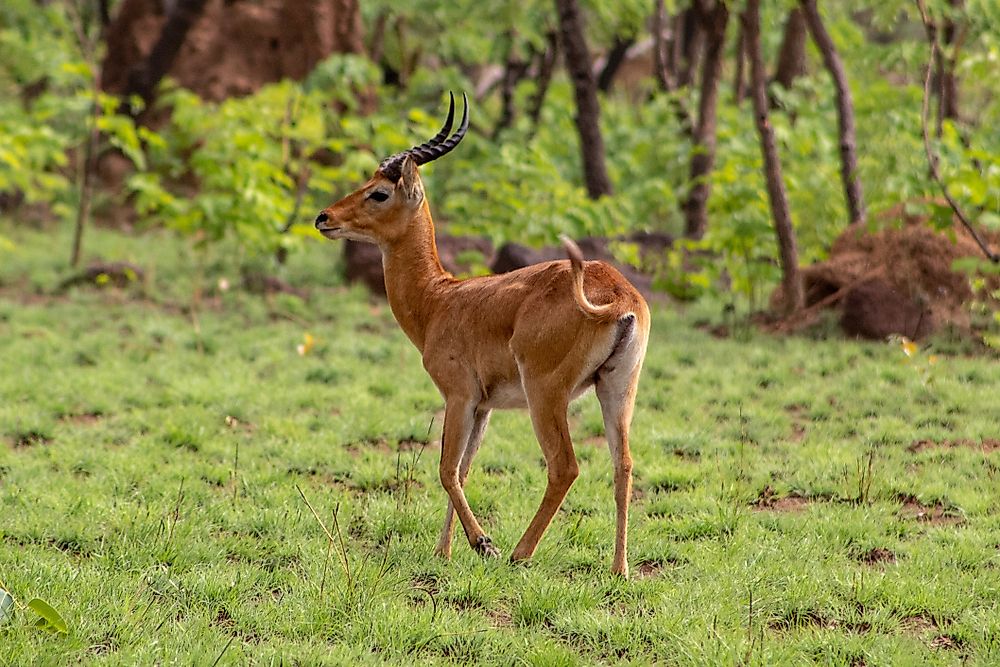The Eight National Parks Of Ivory Coast

The Côte d’Ivoire or the Ivory Coast is located in West Africa. The country hosts an incredible biodiversity featuring 4,700 species of flora, 223 species of mammals, 702 species of birds, 38 amphibian species, 111 fish species, 125 species of reptilians, and a great diversity of invertebrates. It is the region’s most biodiverse nation. The national parks of the Ivory Coast have been established to protect the flora and fauna of the country. They are as follows:
8. Assagny National Park
This national park is located near the city of Grand-Lahou, a coastal town in the southern part of the Ivory Coast. The Assagny National Park was founded in January 1981. It covers a large area of 19,400 square km. The park was designated as a Ramsar Wetland on February 27, 1996. Only a small section of the park is accessible to the visitors. Visitors can also take boat rides along the navigable waterways to observe the wildlife in the park. Primates, wild buffaloes, a variety of birds, butterflies, and other insects. It is also home to one of the last elephant herds of the country.
7. Banco National Park
This national park is located to the north of the city of Abidjan, the capital of the Ivory Coast, in the southeastern part of the country. The Banco National Park was founded in 1953 and occupies an area of 300 square km. It protects the rare flora and fauna of the country. Primary forests with tropical hardwood trees like teak are found here. Fauna found at the Banco National Park include African civet, duiker, bushbuck, genet, monkeys, etc. The residents of the city treat the park as their primary recreational area.
6. Comoé National Park
This national park is West Africa’s largest protected area. It is both a UNESCO World Heritage Site and a Biosphere Reserve. The park covers an area of 11,500 square km and features a variety of habitats that hosts great biodiversity. Gallery forests, forest islands, riparian grasslands, savanna, are some of the different types of ecosystems found here. 135 mammalian species inhabit the park including 11 species of primates. The chimpanzee, olive baboon, Mona monkey, spot-nosed monkey, etc., are some of the primates living in the park. The mammalian fauna also includes the bushbuck, waterbuck, hippopotamus, buffalo, red-flanked duiker, and others. Many of the mammalian fauna of the Comoé National Park are threatened with extinction. More than 500 species of birds including both residents and migratory species can be spotted here. Some of the notable species include the hornbills, Denham's bustard, vultures, black-winged stilt, etc. The Comoé river flowing through this park is the home of more than 60 species of fish. 71 species of reptiles including three crocodilian species are also found here.
5. Îles Ehotilés National Park
This national park of the Ivory Coat protects the country’s Ehotilé Islands that lie between the Atlantic Ocean and the Aby Lagoon. The national park was established on April 25, 1974. It covers an area of 105 square km. The park hosts mangrove wetlands, and a wide variety of fauna like bats, rodents, migratory birds, etc. The surrounding waters are also home to several species of marine flora and fauna. Some cultural and historical sites are also present in the area.
4. Marahoué National Park
This national park occupies an area of 1000 square km in Côte d'Ivoire. The protected area was established in 1968 and was home to a significant chimpanzee population as well as other species. Unfortunately, the national park is currently under severe threat from humans. The habitats within the park have been greatly degraded and destroyed by the people and the wildlife has been indiscriminately hunted. Thus, presently, the national park is nearly completely unsuitable for hosting wildlife.
3. Mont Péko National Park
This national park of Côte d'Ivoire includes the 2723 feet high Mont Péko and the surrounding areas within its limits. The park is noted for its significant population of chimpanzees. A census carried out in the park in 2001 suggested a chimpanzee population density of 1.6 chimpanzees per square km. The total number of weaned chimpanzees was estimated to be around 320.
2. Mont Sângbé National Park
This national park received its current status in 1976. It is located in the Monts du Toura mountain range. It encompasses an area of 950 square km. Several peaks of over 700 m in elevation are found in this area. The vegetation of the national park is dominated by dense savanna woodland with patches of forested areas. The wildlife found here include chimpanzees, king colobus, Diana monkey, the African bush elephant, bongo, royal antelope, waterbuck, etc. Reptiles like the dwarf crocodile, slender-snouted crocodile, etc., also inhabit the park. The bird fauna is also estimated to be diverse but is not well documented.
1. Taï National Park
This national park of the Ivory Coast hosts one of West Africa’s last primary rainforests. UNESCO inscribed the park as a World Heritage Site in 1982. The Taï National Park spans an area of 3,300 square km. It was first founded as a Forest Reserve in 1926 and then upgraded to the rank of a national park in 1972. The park hosts flora and fauna of great conservation significance like the Jentink's duiker, olive colobus monkeys, leopards, chimpanzees, and the pygmy hippopotamus. Of late, investigations have revealed the national park to be the natural reservoir of the much-feared Ebola virus. 140 mammalian species including 11 primate species, more than 250 species of birds, 40 species of reptiles, 56 species of amphibians, and a large number of invertebrate species inhabit the Taï National Park. The fauna of the park includes several endemics.











